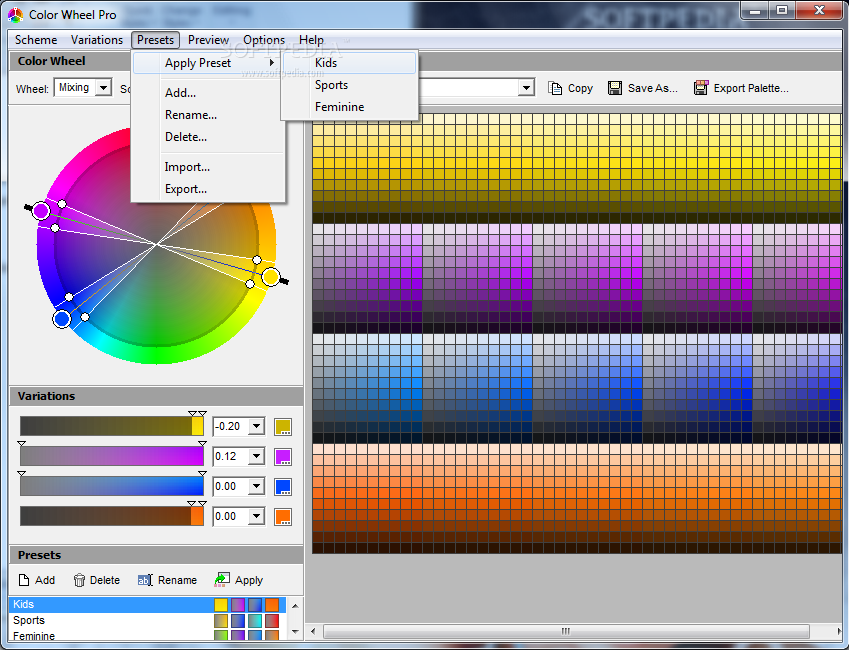
TERTIARY COLORS: Blue-Violet, Red-Violet, Red-Orange, Yellow-Orange, Yellow-Green, and Blue-Green Secondary colors are created by mixing equal parts of two primary colors together. SECONDARY COLORS: Violet, Orange, and Green When painting it is important to have a true red, blue, and yellow to help you mix a variety of other colors. These three primary colors are the foundation of the color wheel. They are called the primary colors because their true color pigments cannot be created by mixing any other combination of colors and all other colors in the color wheel are derived from these three hues. On the painter's color wheel, colors are divided into 3 main groups: primary colors, secondary colors, and tertiary colors. Still, isn't it interesting how light impacts what our eyes see? On a subtractive color wheel, the primary colors are red, yellow, and blue.įor the purposes of painting, you really only need to know about this color wheel. This can be paint, dye, pigment, or anything else.

Subtractive colors start from white, and then colorants are used to cause the surface to reflect a different color back to our eyes. On this color wheel, the primary colors are red, green, and blue.Ī subtractive color wheel is what we commonly think of as the painter's color wheel. Digital screens like this use an additive color method, by beginning as black and then mixing different amounts of colored light they can create all the colors in the visible light spectrum. But after a few moments, the pixels, or pinpoints of light, that make up the screen light up and show you images.
#Color wheel pro color theory basics tv#
Have you ever looked at computer or TV screen very close to the surface? If you have, you may recall, your view begins as just a black screen. The subtractive color wheel shows us how a color looks to us when white light, such as sunlight, reflects off of an object. An additive color wheel reflects how different wavelengths of lights can create visible color. But why? It all comes back to light and the way our eyes interpret it to see color. There are two main methods of producing color, subtractive or additive. You're probably familiar with the color wheel taught in most art classes, but did you know it's not the only one? And the main tool used to help artists understand these relationships is the color wheel.Ī color wheel is an illustrative tool used to help us define colors and their relationships to one another, the first one was invented in 1666 by Sir Issac Newton and several variations have been used since then. In the artistic world today, color theory is defined as practical guidance for visual artists and designers that helps them come up with color schemes, mix colors, and define colors as we see them. While science focused on our vision in relation to color, artists focused on how colors could be created, combined, and used. From there the artistic tradition of color theory split away from the scientific. Later on, scientists studied the influence of light and how it impacts what colors we can see and why.Ī more modern approach to the study of color can be seen around the 18th century when we began to define terms we still use today, such as primary colors.

Back then, philosophers discussed the mixing of colors and how they could be used to produce new ones. The study of color theory has a long and storied history dating all the way back to Aristotle. Whether you're a painter, a home renovator, or looking to put together a stunning outfit understanding color theory is the key to making harmonious color schemes and creating with confidence.




 0 kommentar(er)
0 kommentar(er)
